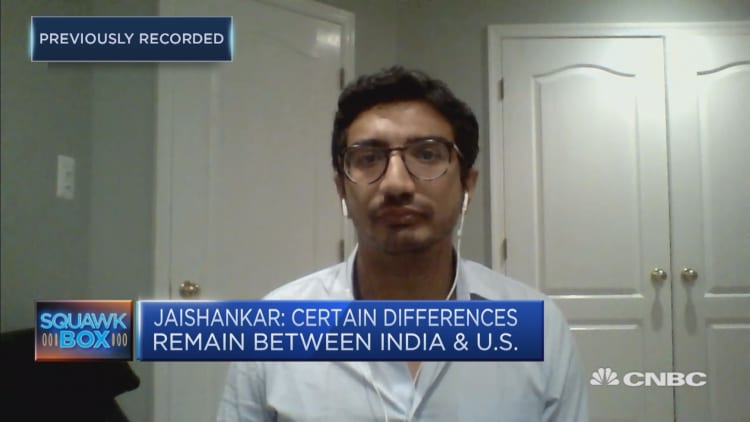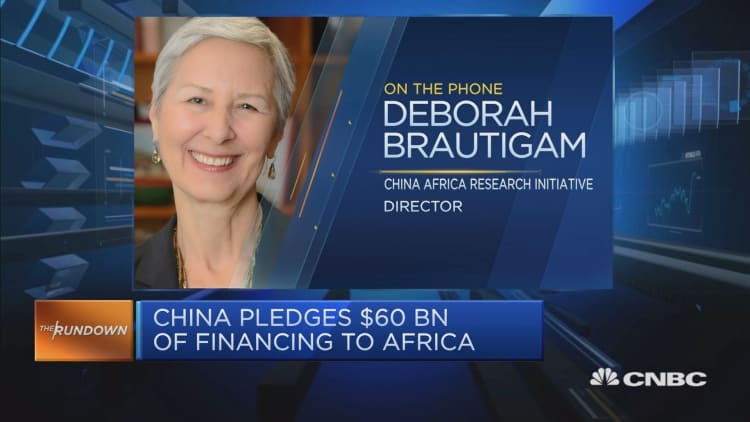A proposed U.S. development finance institution with a lending cap of $60 billion is aiming to be "a clear alternative" to China's controversial Belt and Road program, according to stakeholders.
The proposed entity, known as the U.S. International Development Finance Corporation (IDFC), looks to consolidate existing U.S. agencies in charge of public and private capital in less developed countries. Lawmakers introduced the idea earlier this year through the Better Utilization of Investments Leading to Development (BUILD) Act, which is currently pending approval from the Senate.
The effort is part of Washington's strategy to counter rising Chinese influence abroad, especially within Asia. In July, the White House announced $113 million in infrastructure spending for the Indo-Pacific region amid widespread worries of Beijing using investments as a way to achieve geopolitical objectives.
IDFC vs Belt and Road
Speaking at an event hosted by think tank The Stimson Center in Washington on Thursday, advocates for the BUILD Act said it can facilitate economic progress in poor countries in a way that Chinese investment doesn't.
Through its capacity to team up with other development finance organizations around the world, the IDFC "will be a counter to China's One Belt, One Road," according to Ted Yoho, a U.S. congressman for Florida and the chairman of the House Foreign Affairs Subcommittee on Asia and the Pacific.
Beijing's apparent efforts to position itself as a regional hegemon have sparked fears of economic imperialism, but the U.S. has a more free and fair vision for Asia, he said in prepared remarks.

"The U.S. is increasingly concerned about China's efforts in the region, the types of investments they are making, what it's doing to different economies and what it's doing for China's strategic interests," echoed Clete Willems, special assistant to the president for international trade, investment and development at the National Security Council. "We want to find a way to provide a clear choice and a clear alternative and that's really what this is all about."
The IDFC's size is set to be more than double the Overseas Private Investment Corporation, the current instrument for development finance that has a ceiling of $29 billion. Unlike its predecessors, the IDFC would boast the ability to make equity investments abroad.
The proposed institution looks to employ local workers and catalyze private sector money in a transparent fashion that will boost economic growth. Its model is a clear response to some of the biggest criticisms behind Belt and Road: a reliance on Chinese workers and unsustainable loans that many participating nations cannot afford in the long term. If unable to pay, indebted countries may be forced to sell strategic state assets to Beijing, as was the case with Sri Lanka — a phenomenon that's been dubbed debt-trap diplomacy.
Such problems arise from China's use of government-to-government agreements, said Conor Savoy, director of policy and advocacy at investment firm Global Innovation Fund. Private investment, as promoted under the IDFC, is more sustainable, he added.

The Belt and Road's weaker-than-expected project activity could also benefit the U.S.
There is a major gap between China's official plans and actual activities on the ground, said a September report by the Center for Strategic and International Studies. "Beijing's control problem could be Washington's opportunity," it added.
In terms of size, Washington still remains unable to match Beijing's war chest. Even combined, the IDFC's proposed $60 billion portfolio and the $113 million fund announced in July pale in comparison to the trillion-dollar Belt and Road.
But developing economies in need of financing partners shouldn't just focus on the dollar figure, BUILD supporters maintain.
Countries "need to look at the totality and question whether which deal will do more for their economy in the long run," said Willems, referencing President Donald Trump's free and open Indo-Pacific vision.
"If you measure by that standard, we'll come out far ahead," he said.

